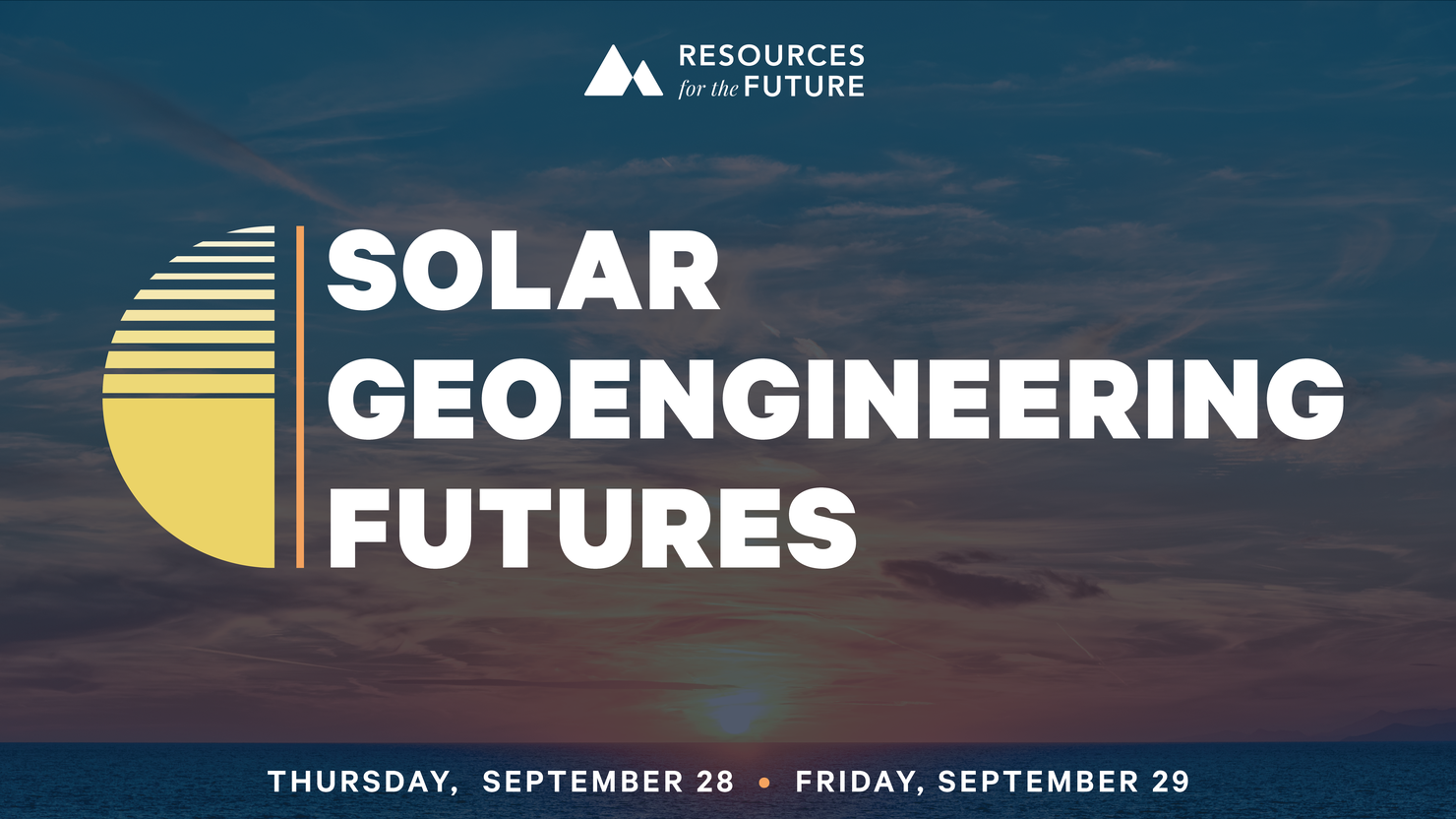Twice a month, we’re compiling the most relevant news stories from diverse sources online, connecting the latest environmental and energy economics research to global current events, real-time public discourse, and policy decisions. Keep reading, and feel free to send us your feedback.
Here are some questions we’re asking and addressing with our research chops this week:
How may a new environmental law in New York State affect air pollution across different communities?
The US Environmental Protection Agency (EPA) has postponed a change to the standard for ground-level ozone, also known as smog, until 2024 or later. Advisory groups had recommended that the agency tighten the legal limit for ozone. While air pollution affects everyone, local pollutants may impact some communities more than others. On the latest episode of the Resources Radio podcast, RFF Research Associate Molly Robertson and Victoria Sanders, a research analyst at the New York City Environmental Justice Alliance, discuss new research on how the implementation of a New York State climate law may affect the levels of different air pollutants—including PM2.5—in specific communities across the state, including disadvantaged communities, which often experience disproportionately high levels of local air pollution. Among the potential implementation options that Robertson, Sanders, and coauthors analyzed in this research, the policy case that was inspired by environmental justice stakeholders “offers greater air-quality improvements across all types of communities—both disadvantaged and non-disadvantaged communities alike,” says Robertson.
How do federal agencies justify new regulations, and what updates could improve that process?
EPA recently proposed a regulation that would require facilities that produce coke, a key ingredient in steel, to monitor levels of benzene, an air pollutant that can leak from facilities during coke production and increase the risk of cancer. In this proposal, the agency compares the benefits with the costs of the regulation—a process that EPA and other federal agencies often must complete to show that the benefits of a new regulation outweigh the costs. However, one factor in many benefit-cost analyses may warrant new attention, says RFF Senior Research Analyst Emily Joiner; namely, a number called the “value of a statistical life.” In a new blog post, Joiner discusses the value of a statistical life, which represents the monetary value of incrementally reducing a person’s risk of death and constitutes a large portion of the benefits in benefit-cost analyses. Joiner’s work with RFF coauthors Alan Krupnick and Maureen L. Cropper indicates that an update to the number is long overdue: “The value has not been updated with new research since 1997,” says Joiner in the blog post.
How is the US Department of Energy trying to boost the production of clean hydrogen fuel—and the demand for that fuel?
The US Department of Energy has invited proposals from organizations that can help accelerate demand for hydrogen by facilitating business between hydrogen producers and consumers. Enlisting a “market maker” to build a market for hydrogen could help reduce financial risks for hydrogen producers and consumers, say RFF scholars Aaron Bergman and Alan Krupnick, though this approach may come with risks of its own. In a recent article on the Common Resources blog, Bergman and Krupnick discuss the “market maker” policy and other approaches that the Department of Energy could take to shore up demand for hydrogen. “Creating a [market maker], replete with high transaction costs and potentially complicated and restricted funding mechanisms, risks inefficiencies and delays,” they say.

Expert Perspectives
In Focus: Shaping Policy Expectations in the Private Sector
Leaders in government, research, and business are meeting this week in New York City for Climate Week, which coincides with a meeting of the United Nations General Assembly. Attendees are expected to discuss progress toward pledges to achieve net-zero greenhouse gas emissions. In this installment of the In Focus video series, RFF Senior Fellow Dallas Burtraw discusses an approach that policymakers might adopt to support the progress of various nations toward net zero: facilitating investor confidence in the credibility of net-zero commitments.

Resources Roundup

Analyzing the State of International Climate Policy
Climate Week in New York City, which concludes today, serves as a global forum for discussions on international and domestic climate policy. Experts at a climate summit earlier this week focused in one panel on a trade policy that recently has gained traction: carbon border adjustment mechanisms, which impose a fee on imports that are produced in nations that have less stringent climate policies than the importing nation. Concerns about the geopolitics of these policies have come to the fore. “Some countries are using [carbon] border measures not to level the playing field but to change the playing field,” said RFF Vice President for Research and Policy Engagement Billy Pizer during the panel.
Reducing Damages from Weather-Related Disasters in US Coastal Communities
Coastal disasters will account for the majority of the economic costs of climate change in the United States by midcentury. But a law from the 1980s may provide a solution for reducing these costs. In a recent public comment, RFF scholars Margaret Walls, Yanjun (Penny) Liao, and Hannah Druckenmiller discuss the historical benefits that have resulted from the Coastal Barrier Resources Act, which prohibits the allocation of federal subsidies toward building new infrastructure in certain coastal areas. “Withdrawing these subsidies can limit exposure to coastal hazards, contribute to the preservation of natural lands that provide a range of environmental benefits, and reduce federal liabilities in the event of disasters,” they say.
US Electric Grid Needs Upgrades to Accommodate Increase in Electricity Demand
The transmission system in the United States, which transports and distributes electricity from generators to consumers, will need to grow substantially in the coming decades to accommodate the expected increase in electricity generation and use. But, because transmission projects can take over a decade to build, researchers are investigating other options for expanding and upgrading the system. In a new report, former RFF Research Intern Srishti Slaria and RFF scholars Molly Robertson and Karen Palmer discuss the benefits and challenges associated with these options. “Exploring these additional types of investments can help us understand where and when lower-cost and more rapidly deployed alternatives can provide solutions to some of our transmission woes,” they say.
Understanding Greenhouse Gas Emissions from the Agricultural Sector
In December, the US Congress is expected to reauthorize the Farm Bill, an extensive package of legislation that contains provisions for the US agricultural sector. The bill will have implications for the amount of greenhouse gas emissions that the sector produces, which accounted for around 10 percent of total US emissions in 2021. In a new entry in RFF’s explainer series, RFF scholars Emily Joiner and Michael A. Toman explore the sources of and options for reducing emissions in the sector. “Reducing emissions from crop cultivation and animal husbandry is an important part of efforts to achieve economy-wide decarbonization,” they say. Stay tuned for additional forthcoming RFF publications on emissions from the agricultural sector and the Farm Bill.

Informing Decisionmaking on Solar Geoengineering with Interdisciplinary Research
Solar geoengineering refers to methods of intentionally cooling the planet by reflecting sunlight away from the Earth’s surface. Though related technologies pose risks, interest and research in solar geoengineering have increased as the effects of climate change intensify, and as researchers acknowledge the importance of interdisciplinary collaboration when considering the implications. Next week, on September 28 and 29, RFF will host a two-day conference about solar geoengineering that features an interdisciplinary group of experts who will discuss the associated challenges and uncertainties. RSVP to join the conference virtually or in person.

#ChartOfTheWeek

Data: National Oceanic and Atmospheric Administration. Chart: Guardian.
Weather-related disasters in the United States that have caused over $1 billion in damages occurred more often in the first seven months of 2023 than over the same period in any year since 1980, according to a recent report from the National Oceanic and Atmospheric Administration. That frequency has increased further since July; the wildfires in Hawaii and Hurricane Idalia caused well over $1 billion in damages. Though the costs from the fallout of these types of disasters are expected to increase in coming decades, policymakers may be able to mitigate the resulting economic damages in US coastal areas by limiting federal subsidies for development and infrastructure, recent RFF research finds.









